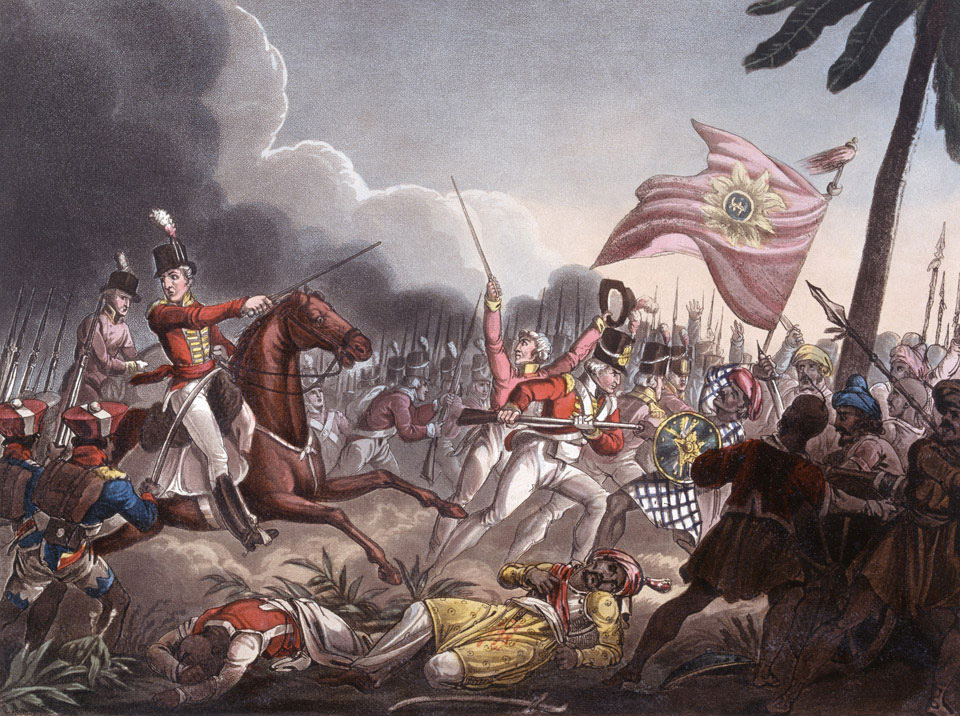
Second Anglo-Maratha War
The Second Anglo-Maratha War (1803–1805) was the second conflict between the British East India Company and the Maratha Empire in India. It resulted in major loss of territory for the Marathas, including regions around Delhi and in present-day Gujarat falling into direct Company rule.
Background[edit]
The British had supported the "fugitive" Peshwa Raghunathrao in the First Anglo-Maratha War, continued with his "fugitive" son, Baji Rao II. Though not as martial in his courage as his father, the son was "a past master in deceit and intrigue". Coupled with his "cruel streak", Baji Rao II soon provoked the enmity of Yashwant Rao Holkar when he had one of Holkar's relatives killed.[2]
The Maratha Empire at that time consisted of a confederacy of five major chiefs: the Peshwa (Prime Minister) at the capital city of Poona, the Gaekwad chief of Baroda, the Scindia chief of Gwalior, the Holkar chief of Indore, and the Bhonsale chief of Nagpur. The Maratha chiefs were engaged in internal quarrels among themselves. Lord Mornington, the Governor-General of British India had repeatedly offered a subsidiary treaty to the Peshwa and Scindia, but Nana Fadnavis refused strongly.
In October 1802, the combined armies of Peshwa Baji Rao II and Scindia were defeated by Yashwantrao Holkar, ruler of Indore, at the Battle of Poona. Baji Rao fled to British protection, and in December the same year concluded the Treaty of Bassein with the British East India Company, ceding territory for the maintenance of a subsidiary force and agreeing to treaty with no other power. The treaty would become the "death knell of the Maratha Empire".[2]
Conclusion[edit]
On 17 December 1803, Raghoji II Bhonsale of Nagpur signed the Treaty of Deogaon[2]: 73 in Odisha with the British after the Battle of Argaon and gave up the province of Cuttack (which included Mughal and the coastal part of Odisha, Garjat/the princely states of Odisha, Balasore Port, parts of Midnapore district of West Bengal).
On 30 December 1803, the Daulat Scindia signed the Treaty of Surji-Anjangaon with the British[2]: 73 after the Battle of Assaye and Battle of Laswari and ceded to the British, Hisar, Panipat, Rohtak, Rewari, Gurgaon, Ganges-Jumna Doab, the Delhi-Agra region, parts of Bundelkhand, Broach, some districts of Gujarat and the fort of Ahmmadnagar.
The British started hostilities against Yashwantrao Holkar on 6 April 1804. Yashwantrao was somewhat successful as he harassed the British forces by guerilla warfare. However, he didn't receive the expected help from Scindia who had already signed a treaty with the British. He went to Punjab and sought Ranjeet Singh's help with no success. The lack of resources compelled him to come to terms with British.
The Treaty of Rajghat, signed on 24 December 1805, forced Holkar to give up Tonk, Rampura, and Bundi to the British.[2]: 90–96